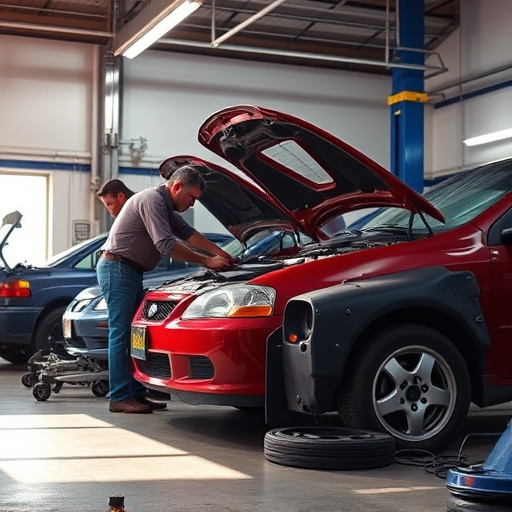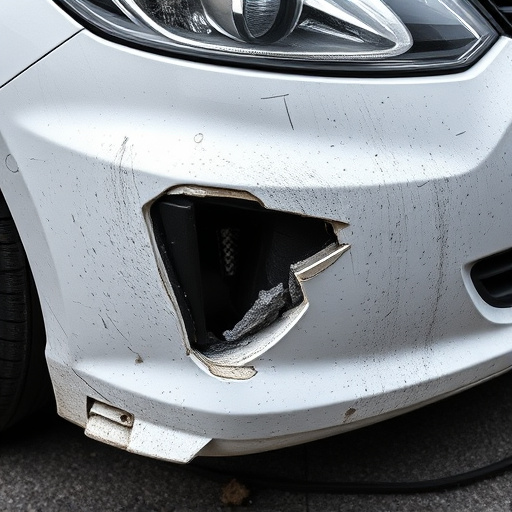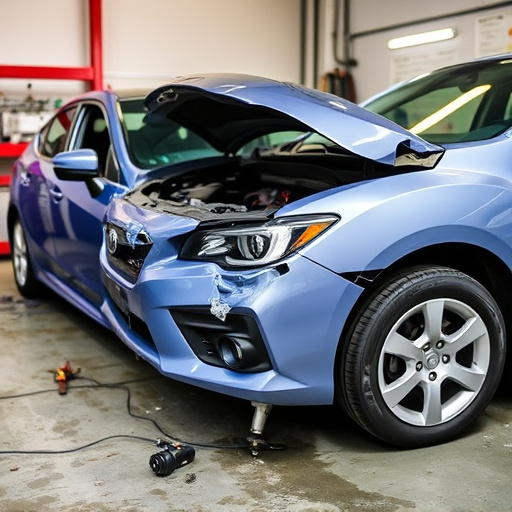Repair Expectations Management is a strategy for auto repair shops to enhance customer experiences, especially for new clients. By transparently communicating assessment, diagnosis, and repair processes, including realistic estimates, shops build trust and satisfy customers. This is crucial during initial visits, particularly for services like paint repairs, where openly discussing limitations helps set realistic expectations. Effective communication, clear updates, and assigning knowledgeable staff promptly address customer doubts, enhancing satisfaction and leading to better auto maintenance outcomes.
Navigating repair expectations management is crucial for ensuring first-time customers have a satisfying experience. This article explores strategies to set realistic expectations, enhance communication, and ultimately boost customer satisfaction. By understanding the core concepts of repair expectations management, businesses can offer transparent and efficient services, fostering trust and loyalty among new clients. Learn how to guide your first-time customers through the process with care and expertise.
- Understanding Repair Expectations Management
- Setting Realistic Expectations for First-Time Customers
- Strategies to Enhance Communication and Customer Satisfaction
Understanding Repair Expectations Management

Repair Expectations Management is a critical aspect of providing an exceptional customer experience, especially for first-time clients who may be unfamiliar with the process. It involves setting clear and realistic expectations regarding the scope of work, timelines, costs, and outcomes associated with vehicle collision repair or general auto repair services. By managing these expectations proactively, auto repair shops can foster trust and ensure customer satisfaction.
When a customer brings their vehicle to an auto repair shop for collision repair services or any other auto repair needs, they bring with them certain assumptions based on past experiences or hearsay. Repair Expectations Management aims to bridge the gap between these assumptions and the actual process and outcomes. This involves transparent communication about the assessment, diagnosis, and repair procedures, as well as providing realistic estimates and timelines for completion. By doing so, customers are better prepared for what lies ahead, reducing anxiety and increasing their confidence in the auto repair shop’s capabilities.
Setting Realistic Expectations for First-Time Customers

When a customer approaches a repair shop for the first time, they often come with lofty expectations, especially when it comes to restoring their vehicle’s appearance. It’s crucial to understand that every car paint repair or bodywork service has its limitations and potential challenges. Setting realistic expectations from the get-go is an integral part of effective repair expectations management.
First-time customers should be made aware of the process involved in car bodywork services, including the various techniques for repairing dents, scratches, or other damages. By explaining these processes openly, you can manage their expectations about turnaround times, costs, and the final outcome. For instance, while vehicle paint repair can significantly enhance the look of a car, it might not always be possible to perfectly match the original factory finish, especially with older vehicles. Transparency builds trust and ensures the customer is prepared for both the good and potential challenges that come with their repair journey.
Strategies to Enhance Communication and Customer Satisfaction

Effective communication is a cornerstone of successful repair expectations management. For first-time customers, especially those dropping off their prized possession like a Mercedes Benz repair, it’s essential to establish open lines of dialogue. This can be achieved by providing clear, concise information about the estimated time for repairs, potential costs, and the steps involved in the process. A friendly and knowledgeable staff member assigned to each customer can also ensure any doubts or concerns are promptly addressed.
Regular updates, even on simple progress checks, can significantly enhance customer satisfaction. This could be as simple as a quick text or email acknowledging receipt of the vehicle, sharing initial assessment findings, and promising timely updates moving forward. This proactive approach fosters trust, keeps customers informed, and ultimately leads to better auto maintenance outcomes for both parties.
First-time customers facing repairs can benefit greatly from understanding repair expectations management. By setting realistic expectations, enhancing communication, and prioritizing customer satisfaction, businesses can foster a positive experience that builds trust and encourages repeat business. These strategies are key to managing customer expectations effectively in the repair industry.














